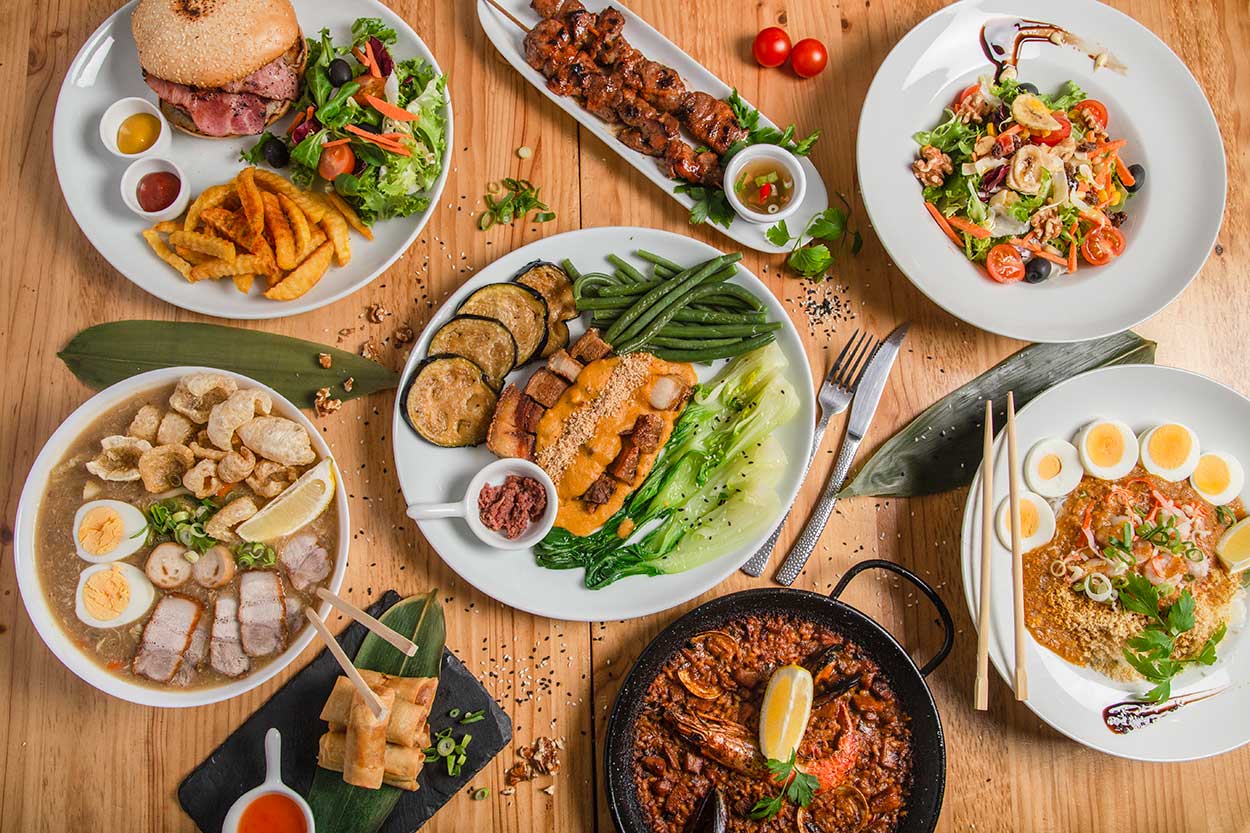What Is Food Tourism, and Why Does It Matter?
Imagine wandering through a bustling market in Bangkok, the air thick with the scent of sizzling street food, or sipping a glass of Chianti in a Tuscan vineyard. That’s food tourism—a delightful journey where travelers seek out authentic culinary experiences to connect with a destination’s culture, history, and people. It’s not just about eating; it’s about immersing yourself in a place through its flavors. Food tourism matters because it’s a powerful driver of economic growth, cultural preservation, and community pride, transforming local industries in ways that go far beyond the plate.
The Rise of Food Tourism
A Growing Appetite for Culinary Adventures
Food tourism has exploded in popularity, with travelers increasingly prioritizing unique dining experiences over traditional sightseeing. According to the World Food Travel Association, 80% of travelers research food and drink options before visiting a new destination, and 53% identify as “culinary travelers.” This shift reflects a global desire for authentic, hands-on experiences, from cooking classes in Italy to food festivals in New Orleans.
Why Food Tourism Is Booming
The surge in food tourism can be attributed to several factors. Social media platforms like Instagram and TikTok amplify the allure of visually stunning dishes, while food-focused TV shows featuring chefs like Anthony Bourdain have inspired wanderlust. Globalization and the rise of disposable income also play a role, encouraging people to explore exotic cuisines and local specialties. This trend shows no signs of slowing down, with the global culinary tourism market projected to grow from USD 1.1 trillion in 2023 to USD 6.2 trillion by 2033, at a CAGR of 18.9%.
Economic Impacts on Local Industries
Boosting Local Economies
Food tourism injects significant revenue into local economies. In 2016, tourists in Australia alone spent over $21 billion on food, wine, and brewery experiences. This spending supports a wide range of industries, from agriculture to hospitality, creating a ripple effect that benefits entire communities.
Agriculture and Local Producers
Local farmers and producers are among the biggest winners in food tourism. Travelers seeking authentic, farm-to-table experiences drive demand for locally sourced ingredients, boosting sales for small-scale farmers. For example, in Vojvodina, Serbia, traditional local specialties like cheeses and cured meats have become tourist attractions, supporting rural agricultural communities.
- Increased Demand: Tourists’ preference for local products encourages farmers to diversify crops and maintain traditional practices.
- Direct Sales: Farmers’ markets and farm tours allow producers to sell directly to consumers, cutting out middlemen and increasing profits.
- Sustainability: Food tourism promotes sustainable agriculture by valuing organic and locally sourced goods.
Hospitality and Foodservice
Restaurants, cafes, and food trucks thrive as food tourists seek out unique dining experiences. In North America, the food tourism sector has spurred growth in food festivals, culinary tours, and cooking classes, creating jobs and boosting local economies. For instance, the Truffle Festival in Canberra, Australia, brings together growers, restaurants, and wineries, generating an estimated consumer surplus of $754 per person.
Tourism and Related Services
Food tourism also benefits tour operators, hotels, and transportation services. Companies like Intrepid Travel and Airbnb Experiences offer curated culinary tours, while platforms like Tripadvisor help travelers discover food-centric destinations. These services cater to the growing demand for immersive experiences, such as visiting local producers or attending food festivals, which in turn drives tourism revenue.
Comparison: Economic Impact Across Regions
| Region | Key Food Tourism Activities | Economic Impact |
|---|---|---|
| Asia Pacific | Culinary tours, street food, cooking classes | 37.8% market share in 2023 |
| North America | Food festivals, farm-to-table experiences | Significant growth in local economies |
| Europe | Wine tours, Michelin-starred dining, local markets | Supports small producers, sustainable practices |
Socio-Cultural Benefits
Preserving Culinary Heritage
Food tourism is a powerful tool for preserving cultural traditions. By showcasing local cuisines, destinations like Safranbolu, Turkey, maintain their gastronomic identity, attracting tourists who value authenticity. This focus on heritage helps communities take pride in their culinary roots, ensuring traditional recipes and techniques are passed down through generations.
Fostering Cultural Exchange
When tourists engage with local food culture, they build bridges between communities. For example, in India, the diversity of spices and artistic presentation of dishes draw international visitors, fostering cultural appreciation and understanding. This exchange enriches both travelers and locals, creating lasting connections.
Supporting Sustainable Tourism
Food tourism aligns with the growing demand for sustainable travel. Tourists are increasingly drawn to destinations that prioritize eco-friendly practices, such as using locally sourced ingredients and supporting small-scale producers. In the Eastern Black Sea region of Turkey, local food consumption was found to have a positive effect on economic, socio-cultural, and environmental sustainability.
- Economic Sustainability: Supports local businesses and reduces reliance on imported goods.
- Socio-Cultural Sustainability: Promotes cultural pride and preserves traditional practices.
- Environmental Sustainability: Encourages eco-friendly farming and reduces food miles.
Challenges of Food Tourism
Balancing Growth and Authenticity
While food tourism brings economic benefits, it can also strain local resources. Over-tourism in popular culinary destinations like Barcelona or Amsterdam can lead to inflated prices and loss of authenticity. Local businesses may prioritize tourist-friendly menus over traditional dishes, diluting cultural heritage.
Pros and Cons of Food Tourism
| Pros | Cons |
|---|---|
| Boosts local economies through spending | Risk of over-tourism and cultural dilution |
| Preserves culinary traditions | Strain on local resources and infrastructure |
| Promotes sustainable practices | Potential for environmental degradation |
| Fosters cultural exchange | Language barriers for international tourists |
Language and Cultural Barriers
In non-English-speaking countries like Japan or Thailand, language barriers can hinder tourists’ ability to fully engage with local food culture. Miscommunication about dietary needs or cultural etiquette can detract from the experience. Destinations must invest in multilingual resources to enhance accessibility.
The Role of Digital Marketing and SEO in Food Tourism
Amplifying Food Tourism Through Social Media
Social media has transformed food tourism by allowing travelers to share their culinary adventures instantly. Platforms like Instagram and TikTok showcase vibrant dishes, influencing others to visit the same destinations. A study found that online reviews on platforms like Yelp significantly impact restaurant performance, creating buzz around specific menu offerings.
SEO Strategies for Food Tourism Businesses
Search Engine Optimization (SEO) is critical for food tourism businesses looking to attract global audiences. With 60% of leisure travelers using search engines to plan trips, optimizing for relevant keywords is essential. Here’s how businesses can leverage SEO:
- Location-Based Keywords: Use terms like “best ramen in Tokyo” or “Tuscan cooking classes” to target specific audiences.
- Mobile Optimization: Ensure websites load quickly on mobile devices, as many travelers research on smartphones.
- Google Business Profiles: Optimize profiles with reviews and local keywords to boost visibility in local searches.
- Content Creation: Publish blogs about local food culture to attract organic traffic and improve SERP rankings.
Case Study: Kefalonia, Greece
A study on the Greek island of Kefalonia showed that SEO-optimized tourism websites significantly improved their Google rankings, attracting more visitors. By focusing on location-specific keywords and high-quality content, businesses saw a 45% higher click-through rate. This demonstrates the power of SEO in driving food tourism growth.
Best Tools for Food Tourism Marketing
To maximize visibility, businesses can use the following tools:
- Google Analytics: Tracks website traffic and user behavior to refine SEO strategies.
- SEMrush: Identifies high-ranking keywords and monitors competitors’ performance.
- Hootsuite: Manages social media campaigns to promote culinary experiences.
- Tripadvisor: Encourages customer reviews to build trust and visibility.
Real-Life Stories: Food Tourism in Action
A Taste of Tuscany
Last summer, I joined a cooking class in a small Tuscan village, where a local nonna taught us to make fresh pasta. The experience wasn’t just about the food—it was about the stories she shared, from her grandmother’s recipes to the history of the region’s olive groves. This hands-on connection to Tuscan culture left me with a deeper appreciation for the place and its people. Such experiences are at the heart of food tourism, driving demand for local ingredients and supporting small businesses.
The Street Food Scene in Delhi
In Delhi, India, food stalls lining the streets offer everything from spicy chaat to buttery parathas. A friend who visited recently described how social media posts about these stalls influenced her itinerary. She spent an entire day exploring local markets, guided by Instagram recommendations. This highlights how digital platforms amplify food tourism, benefiting vendors and creating jobs.
People Also Ask (PAA) Section
What is food tourism, and how does it work?
Food tourism involves traveling to experience a destination’s culinary culture, such as tasting local dishes, visiting food producers, or attending festivals. It works by connecting travelers with authentic food experiences, often through tours, classes, or markets, boosting local economies and cultural exchange.
How does food tourism benefit local communities?
Food tourism supports local farmers, restaurants, and tour operators by driving demand for their products and services. It preserves cultural traditions, creates jobs, and promotes sustainable practices, contributing to economic and socio-cultural growth.
What are the challenges of food tourism?
Challenges include over-tourism, which can strain resources, and the risk of losing authenticity as businesses cater to tourists. Language barriers and environmental impacts are also concerns, requiring careful management to ensure sustainability.
How can businesses promote food tourism?
Businesses can use SEO, social media, and platforms like Tripadvisor to reach travelers. Optimizing for location-based keywords, creating engaging content, and encouraging reviews are key strategies to attract food tourists.
FAQ Section
What is the economic impact of food tourism?
Food tourism generates significant revenue for local economies, supporting agriculture, hospitality, and tourism sectors. For example, the global market is expected to reach USD 6.2 trillion by 2033, creating jobs and boosting small businesses.
How does food tourism promote sustainability?
By prioritizing locally sourced ingredients and eco-friendly practices, food tourism reduces environmental impact and supports sustainable agriculture. It also encourages cultural preservation, benefiting communities long-term.
Can food tourism help small businesses?
Yes, food tourism drives demand for local products and services, benefiting small-scale farmers, restaurants, and tour operators. It creates opportunities for direct sales and fosters community pride.
How important is SEO for food tourism businesses?
SEO is crucial, as most travelers use search engines to plan trips. Optimizing for location-based keywords and mobile-friendly websites can significantly increase visibility and bookings.
Where can I find food tourism experiences?
Platforms like Airbnb Experiences, Tripadvisor, and Intrepid Travel offer curated culinary tours and activities. Local tourism boards and food festivals are also great resources for authentic experiences.
Conclusion: A Feast for the Future
Food tourism is more than a trend—it’s a transformative force that nourishes local economies, preserves cultural heritage, and fosters sustainable practices. From the vibrant markets of Asia to the rustic farms of Europe, it connects travelers with the heart of a destination. By leveraging digital marketing and SEO, businesses can amplify their reach, ensuring that every bite tells a story. So, next time you travel, skip the generic souvenir and savor a local dish instead—it’s a delicious way to support communities and create memories that linger long after the last crumb.



